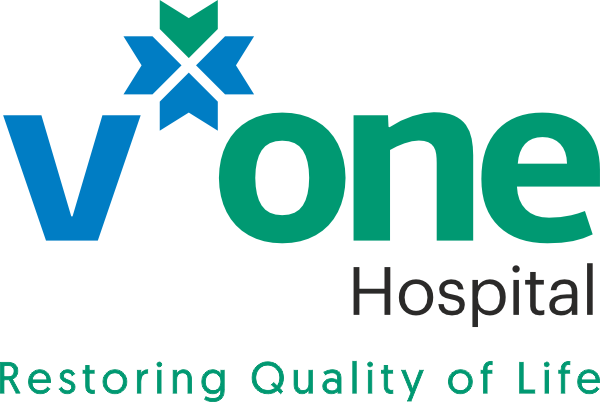Exploring Non-Surgical Facelift Procedures: Benefits & Techniques
In recent years, non-surgical facelift procedures have gained popularity as a minimally invasive alternative to traditional facelift surgery. These innovative techniques offer numerous benefits, allowing individuals to achieve a more youthful appearance without undergoing surgery. In this comprehensive guide, we’ll delve into the world of non-surgical facelift procedures, exploring their benefits, techniques, and more.
Understanding Non-Surgical Facelifts
Non-surgical facelift procedures, also known as minimally invasive facelifts or liquid facelifts, involve the use of injectable treatments and other non-invasive techniques to rejuvenate the face and address signs of aging. Unlike traditional facelift surgery, which requires incisions and anesthesia, non-surgical facelifts are performed in-office with minimal downtime and discomfort.
Benefits of Non-Surgical Facelifts
1. Minimally Invasive
Non-surgical facelift procedures typically involve the use of dermal fillers, neuromodulators (such as Botox), and other injectable treatments to achieve desired results. These treatments are administered through small needles, making them minimally invasive compared to surgical procedures.
2. Reduced Downtime
Unlike traditional facelift surgery, which may require weeks of recovery time, non-surgical facelifts typically have minimal downtime. Most patients can resume their normal activities immediately after treatment, making these procedures convenient for individuals with busy lifestyles.
3. Natural-Looking Results
Non-surgical facelift procedures are designed to enhance the natural contours of the face and restore youthful volume and definition. When performed by a skilled practitioner, these treatments can produce subtle, yet noticeable results that appear natural and harmonious with the patient’s facial features.
4. Customizable Treatments
Non-surgical facelift procedures can be customized to address each patient’s unique concerns and aesthetic goals. Whether targeting fine lines and wrinkles, volume loss, or sagging skin, a personalized treatment plan can be tailored to meet the specific needs of the individual.
5. Long-lasting Results
While non-surgical facelift procedures are not permanent, they can provide long-lasting results that typically endure for several months to a year or more, depending on the type of treatment used. With regular maintenance treatments, patients can enjoy sustained improvements in their appearance over time.
Common Non-Surgical Facelift Techniques
1. Dermal Fillers
Injectable dermal fillers, such as hyaluronic acid-based products (e.g., Juvederm, Restylane), are commonly used to restore lost volume, smooth wrinkles, and enhance facial contours.
2. Neuromodulators
Botulinum toxin injections, such as Botox or Dysport, are used to relax muscles responsible for dynamic wrinkles, such as crow’s feet and frown lines, resulting in a smoother, more youthful appearance.
3. Thread Lifts
Thread lift procedures involve the insertion of dissolvable sutures beneath the skin to lift and tighten sagging facial tissues. Over time, the threads stimulate collagen production, further enhancing the skin’s firmness and elasticity.
4. Laser and Energy-Based Treatments
Laser resurfacing and energy-based therapies, such as radiofrequency and ultrasound, can improve skin texture, tone, and laxity by stimulating collagen production and tightening underlying tissues.
Choosing a Qualified Plastic Surgeon
When considering a non-surgical facelift procedure, it’s essential to choose a qualified and experienced plastic surgeon in indore who understands the intricacies of facial anatomy and possesses advanced injection technique . Look for board-certified dermatologists, plastic surgeons, or aesthetic physicians who have received specialized training in facial rejuvenation procedures.
Pre- and Post-Procedure Care for Your Non-Surgical Facelift
Achieving optimal results and ensuring a smooth recovery from your non-surgical facelift involves careful preparation and diligent aftercare.
Preparation for Treatment
To minimize side effects like bruising and swelling, and to prepare your skin for the best outcome, please follow these guidelines:
- Avoid Blood Thinners (Consult Your Doctor):
For 7-10 days leading up to your appointment, with your doctor’s approval, discontinue the use of blood-thinning medications and supplements. This often includes Aspirin, Ibuprofen (Advil, Motrin), fish oils, Vitamin E, Gingko Biloba, and St. John’s Wort. Tylenol (Acetaminophen) is generally safe to use.
- Limit Alcohol:
Avoid consuming alcohol for at least 48 hours before your procedure, as it can thin the blood and increase the risk of bruising.
- Arrive Clean:
Please arrive at the clinic with a clean, makeup-free face. This allows your practitioner to start the procedure promptly and reduces the risk of infection.
- Manage Cold Sores:
If you have a history of cold sores, notify your practitioner. Prophylactic medication may be recommended before lip filler or other procedures to prevent a breakout.
Post-Treatment Care Instructions
Proper aftercare is key to minimizing downtime and maximizing the effectiveness of your treatment:
1. Minimize Swelling and Bruising:
- Apply a cool compress or ice pack (wrapped in a clean cloth) to the treated areas intermittently for the first few hours.
- Try to sleep with your head slightly elevated (using an extra pillow) for the first 1-2 nights to help reduce swelling.
2. Avoid Pressure and Manipulation:
- Do not touch, rub, or massage the treated areas for at least 6 hours, unless specifically instructed by your practitioner. Avoid tight-fitting hats or headwear.
Activity and Heat Restriction:
- Avoid strenuous exercise and heavy lifting for 24-48 hours, as increased heart rate and blood pressure can exacerbate swelling and bruising.
- Stay away from excessive heat for the first 24 hours, including saunas, steam rooms, and hot tubs.
Sun Protection is Essential:
Protect your skin from the sun. Always apply a broad-spectrum SPF 30 or higher and wear protective clothing/hats, as UV exposure can affect recovery and longevity of results.
Conclusion
Non-surgical facelift procedures offer a safe, effective, and minimally invasive approach to facial rejuvenation, allowing individuals to achieve natural-looking results with minimal downtime. By understanding the benefits and techniques associated with these treatments and selecting a qualified provider, patients can rejuvenate their appearance and restore confidence in their overall aesthetic. If you’re considering a non-surgical facelift, schedule a consultation with a reputable provider to discuss your options and develop a personalized treatment plan tailored to your needs

